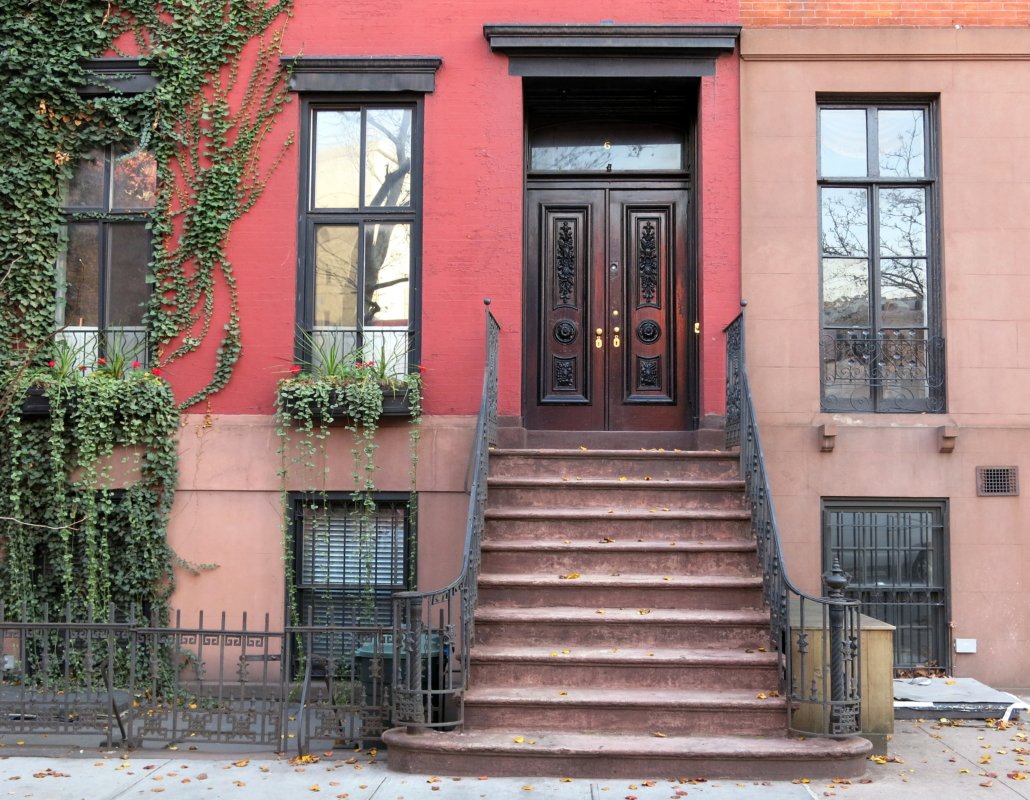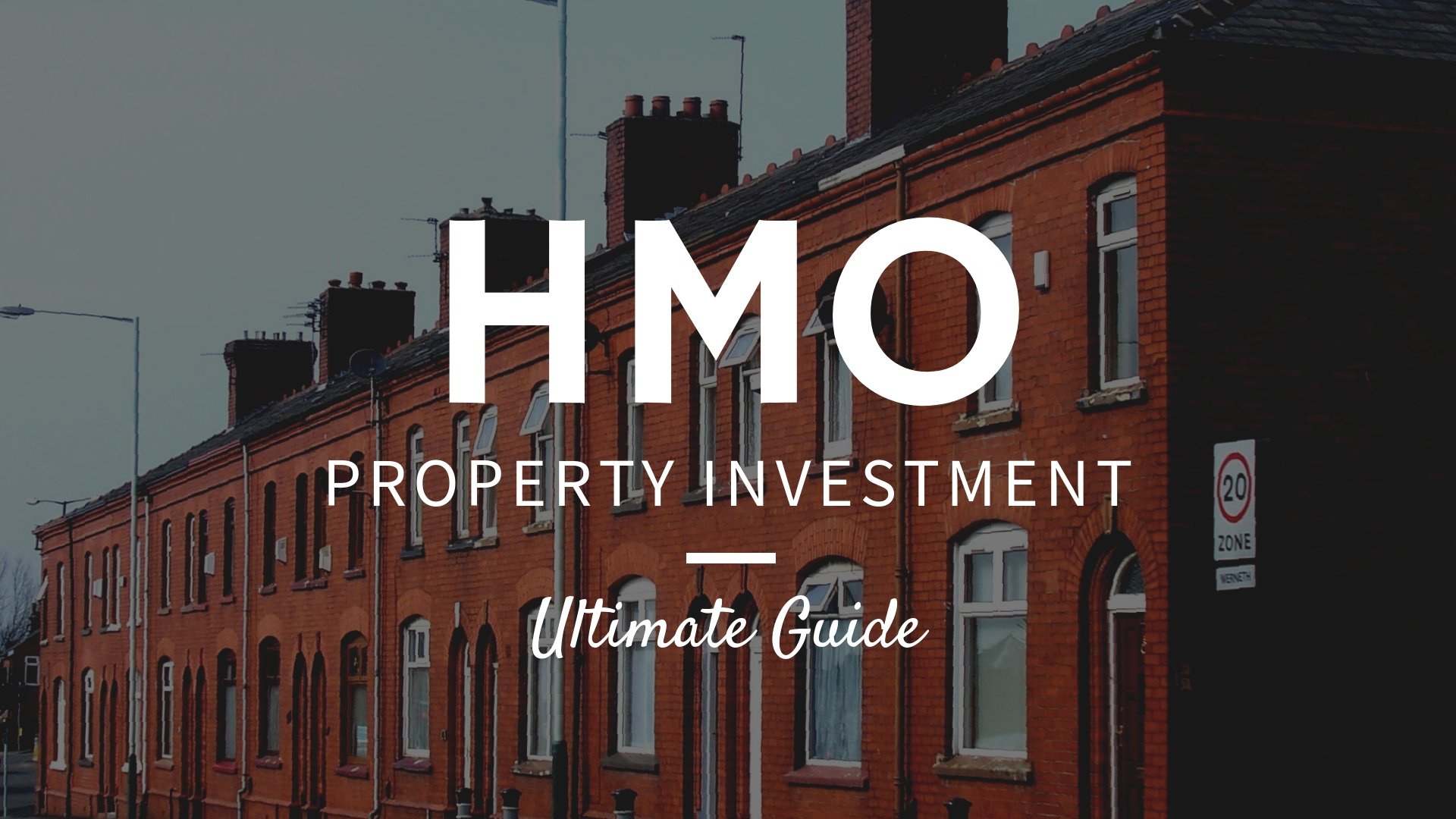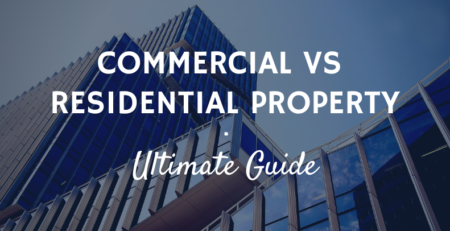HMO Property Investment | Ultimate Guide [Updated 2021]
Our guide to everything you need to know about investing in HMO property investments.
As an investor, you have most probably heard of the term ‘HMO’, and are at least partly aware of the potential benefits. With the potential for high yields and ever-increasing demand from prospective tenants, HMO property looks to be a sure-fire investment.
However, with stricter legislation coming into effect, and finance options becoming increasingly difficult to obtain for HMO property investments, is this still a viable option?
What is a HMO?
A house of multiple occupation (HMO), also known as a multi-let, is exactly as you would guess, a single property in which there is more than one tenant.
More specifically though, the property will have at least three tenants inhabiting the property, with the toilet, kitchen and bathroom facilities being shared. The minimum of three persons living in the property must be from different households – those that are not married or otherwise related.
However, the specifics of what make up a HMO are not always so clear cut. From this graph, we can see that there are many factors that play a part in defining a HMO.
Responsibilities that you may have
You must be careful to understand your legal responsibilities as otherwise, you could find yourself coming unstuck if you are held legally responsible. Fortunately, the guidance is clear and as long as you take the time to research, you will be absolutely fine.
The big requirement is that you install property fire safety equipment and ensure that the communal areas are maintained and repairs are kept on top of. You will need to ensure that the communal washing facilities are up to scratch and that enough waste bins are provided to support the number of tenants in the property. Escape routes are also something that you should give some thought to and even better, have a clear guide sheet to provide your tenants with.
Why invest in HMO?
There are many benefits to investing in HMO property, with the obvious one being the increase in rental yields over single-let properties.
According to recent findings, HMO properties produced the highest yields in the first half of 2019 for the property investment sector at 6.3 percent. When comparing this against the average rental yield of 3.5 percent as of April 2020, the financial benefits are clear.
In addition to the increase in yield, a HMO reduces risk through a spread of income. When compared to a single let property with one source of income, the significance of this becomes clear. If your sole tenant doesn’t make a payment or simply moves out, the entirety of your income from the property is on hold.
With a HMO, there are more sources of income for the property, albeit these amounts being proportionately lower, but making up the same total. With this being a minimum of three separate sources of income, if a single tenant moves out or is not keeping up with payments, it only affects part of your income. This allows you a buffer to remedy the situation.
This is particularly advantageous if you are relying on the income of the property, so a HMO property could make for a great first investment opportunity.
Another advantage of investing in HMOs is the continual increase in demand by prospective tenants. Data from UCAS highlights that young students, those with the lowest average income, are applying to and finishing university at an all-time high in the UK.
When combining this with data from the Office of National Statistics, highlighting that disposable income has only been lower twice in the last twenty years than it is now, the financial benefits are felt mutually between tenants and landlords of HMOs.
Demand for HMOs rose by 150 percent in 2018, with 31 percent seeking HMO property according to Multi-Let UK. This rise in demand also looks set to continue in 2020 with tenants maintaining interest in the market.

Finally, there are some tax advantages to investing in HMO property. HMOs are treated like any other rental property, and this applies regardless of whether buy-to-let (BTL) or commercial financing has been used.
However, as opposed to conventional BTL properties, HMO property landlords can claim ´Plant & Machinery Capital Allowances’, a form of income tax relief. Yearly, a proportion of the capital outlay, these being the capital improvement and purchase costs, is treated as an expense for the rental business.
Importantly, Capital Allowances can be offset against non-property income, unlike normal rental losses that can only be offset against future rental profits. The result of this are tax rebates that can run for thousands of pounds.
What are the drawbacks to investing in HMO property investments?
There are some obstacles you will encounter when investing in HMO that need to be acknowledged before considering an investment. The first being the increase in competition for HMO eligible houses.
With legislation in place (covered in detail below), it is now harder than ever to identify a property that meets the requirements satisfied for a HMO property. The result of this means there is a disproportion of demand to supply, resulting in a scarcity of eligible property and a rise in prices.
Compounding this, the Bank of England shared concerns over HMO properties, stating that they posed a “systemic risk” to the UK economy, in which lenders are forced to impose stricter criteria on borrowing going forward.
Investors will therefore have more difficulty raising finance. Alternative financial solutions may need to be sought by landlords who currently own or wish to invest in such properties, with bigger deposits likely to be required for mortgages.
There are also far fewer letting agents that will manage your HMO investment when compared to standard BTL properties.
Many letting agents will be willing to assist with finding tenants, but very few are willing to fully manage the tenants for your property. If the agent is willing, the cost to you will be a far larger than a single let.
The likelihood is that you will be managing the property yourself in order to see the beneficial financial returns. Although the management of your property may seem achievable short-term, there is a lot of on-going work that is involved with this. A comprehensive list can be found here.
The legislation surrounding HMOs is also stricter when compared to single let properties. For example, under the Town and Country Planning Order 1995, an Article 4 direction may be in place for the area, whereby any property purchased must have planning permission sought to change the properties use from a single let to a HMO, unless the property being purchased is already operating as a HMO.
Not only can this be a lengthy process, but there is no guarantee permission will be approved. Given you have followed current regulations regarding requirements for HMOs, you should be approved, but new regulations recently introduced make this an even trickier task.
Recent legislation regarding HMOs
New legislation has come into effect regarding HMOs, and if you are looking to invest, you will need to be aware of these changes.
This legislation came into effect on the 1st October 2018 and has influenced as many as 177,000 existing HMO properties, according to the Residential Landlords Association. This new legislation comes off the back of some challenges faced by the BTL market over the past few years.
One of these recent challenges includes the 3% stamp duty tax on all second homes and HMO properties in 2016. In addition, the phasing out of tax relief on mortgage interest over the four years to 2021 will affect many, and by 2021 this will be replaced with a flat 20% tax credit.
Before the new legislation, mandatory licensing was only enforced on large HMOs of at least three storeys and five occupants, comprising at least two-family units.
The new legislation encompasses smaller BTL properties within the scheme and extends to a wider range of properties previously unaffected by the mandatory licensing. This includes flats above shops, and small blocks of flats not connected to commercial premises.
In addition to extending the scope of the mandatory licensing, new regulations include the introduction of specific measurements regarding the minimum size of rooms, these being standardised across all councils. The minimum size of rooms is under constant monitoring and is something that landlords and investors need to be consistently aware of.
Now more than ever, if you are considering a HMO property investment, you need to remain knowledgeable about the changes that are being implemented.
What makes a good HMO property investment?
It is imperative then that the property you invest in meets the requirements for the extensive rules and regulations that are required of a HMO property investment.
The rooms, as mentioned above, need to satisfy a minimum size. For those over the age of ten, single bedrooms sleeping one person need to be a minimum of 6.51 square metres in size, whilst a double bedroom sleeping two needs to be at least 10.22 metres in size.
Naturally, if you are looking to accommodate a minimum of three tenants, the property itself needs to have a good number of sizeable rooms, that ideally do not require extensive work or extensions built into them.
Small vs Large
When investing in a HMO property investment, you must consider the size of the property and the potential for the number of occupants. There are advantages and disadvantages to investing in both small and large HMOs – you must identify what’s right for you.
Smaller HMOs are loosely defined as properties that house three or four separate household tenants. You could, in theory, purchase a three or four-bedroom house and rent these rooms separately. The planning permission for this will be easier, with only an article 4 direction to act upon if there is one in place for the area. This would mean that the property would get to the market faster.
The quality of living is likely to be better for the tenants also. With the rooms expected to be of a greater size, and a lower likelihood of tenants falling out with fewer people in the property, in theory, you will have happier tenants. Less tenants also means fewer potential problems and maintenance issues, so a small HMO is easier to manage and maintain.

The obvious advantage of a larger HMO is that your rental income will increase. This is achieved by either purchasing a larger property at a premium or by introducing refurbishments to increase the number of rooms in a property.
There could be as many as twelve tenants living within your large HMO. Whilst operating costs will grow to facilitate this increase in tenants, the financial benefits of the increase in rent will very likely outweigh this.
With less competition for larger properties, you may also find that you could get a better deal. Examples include small care homes and B&B´s.
You will of course need a higher initial start-up for a large HMO. The property itself will cost more. If you are investing in a property with the hopes of converting the rooms to facilitate more tenants, the costs for refurbishment will stack up, and will need to be done from the offset.
More facilities such as bathrooms and kitchens will need to be built to satisfy the needs of the tenants, as well as the rules and regulations in place for HMOs. This could take months. The property is unlikely to go to market as quickly as a small HMO, and you may be waiting longer for tenants too.
Naturally, the property will also be harder to manage. With more potential problems and a higher turnaround of tenants, the property management will be amplified as you increase your number of tenants.
You therefore have to weigh up how invested you will be in the property management side of the investment, and how much time and money you can realistically invest in your HMO property. If you are looking to build a portfolio of HMO properties, you will have to consider the income potential and cost of the individual rooms as opposed to the properties themselves.
It may be more cost effective, certainly long-term, to hold four five-bedroom HMOs than two ten-bedroom HMOs. Although initial investment may be higher for the four properties, the cost to convert these four properties, and then potentially revert them back again, will be lower. Increased man-management and time to get to market, combined with an increase in the spread of your held assets, may make it worth investing in small HMOs.
However, you may find your choice is made for you, as you have to consider what is available in your investment location.
Location is key for investment
The location of your property investment is vital. A recent report by IBM highlights that areas in the North of the UK are excelling in terms of economic growth.

This is due to a rise in inward migration and available employment opportunities, with work recently being created for more than 7,000 people in Manchester and Liverpool alone. Cities in the North are seeing a huge rise in demand for affordable property.
This is supported by a recent study carried out by BDRC Continental, that highlighted the North West as having the highest rental yields for HMOs at 6.7 percent, with the lowest being Central London at 4.8 percent.
Investors have caught on, with Manchester now overtaking London as the number one city for international investment.
When considering an investment in a HMO, you also have to look at the demographic of people you are appealing to. Most of the demand for HMOs is from students and younger people with less disposable income. Naturally then, the location of your HMO investment should be in an area near universities, and with high-demand for lower cost living.
It is essential that the demand for HMO’s in your area of investment is sought before making your investment, and that you choose an area of high economic growth.
Know the HMO Property market
Wherever you choose to invest, it is important that you also do research into other HMOs in the area. This will provide you with many benefits, the main one being that you can gauge what the average rental price is.
Once you have collected this data, you can identify a price you can realistically charge your tenants, giving you a better idea of potential yields. Doing this also allows you to assess the quality of the HMOs in the area.
Consider HMOs in the market as competition. You can assess what they are doing in order to succeed and look to build upon this. You may choose to operate as a premium HMO, furnish the property to a higher standard than the competition and charge a premium for this, but still price yourself under a standard BTL property.
The approach you take will be based on your research into the market and will give you a better idea of what is required to run a successful HMO.
To conclude
Clearly then there is a lot to consider when investing in a HMO, emphasising how essential it is that you have a plan in place before purchasing any investment property.

The benefits of investing in HMO property are potentially huge. Just be aware there are many hurdles you will have to overcome, and the management of HMO properties should play a large part in whether you choose to invest.
With an increase in yields for HMO properties when compared to single-let properties, and the continued rise in demand from prospective tenants, now is a great time to invest in HMO property.
ARE YOU READY TO START INVESTING?
Subscribe to our mailing list now for exclusive deals, investment guides and
the latest information from the property market.
ARE YOU READY TO START INVESTING?
Subscribe to our mailing list now for exclusive deals, investment guides and the latest information from the property market.







